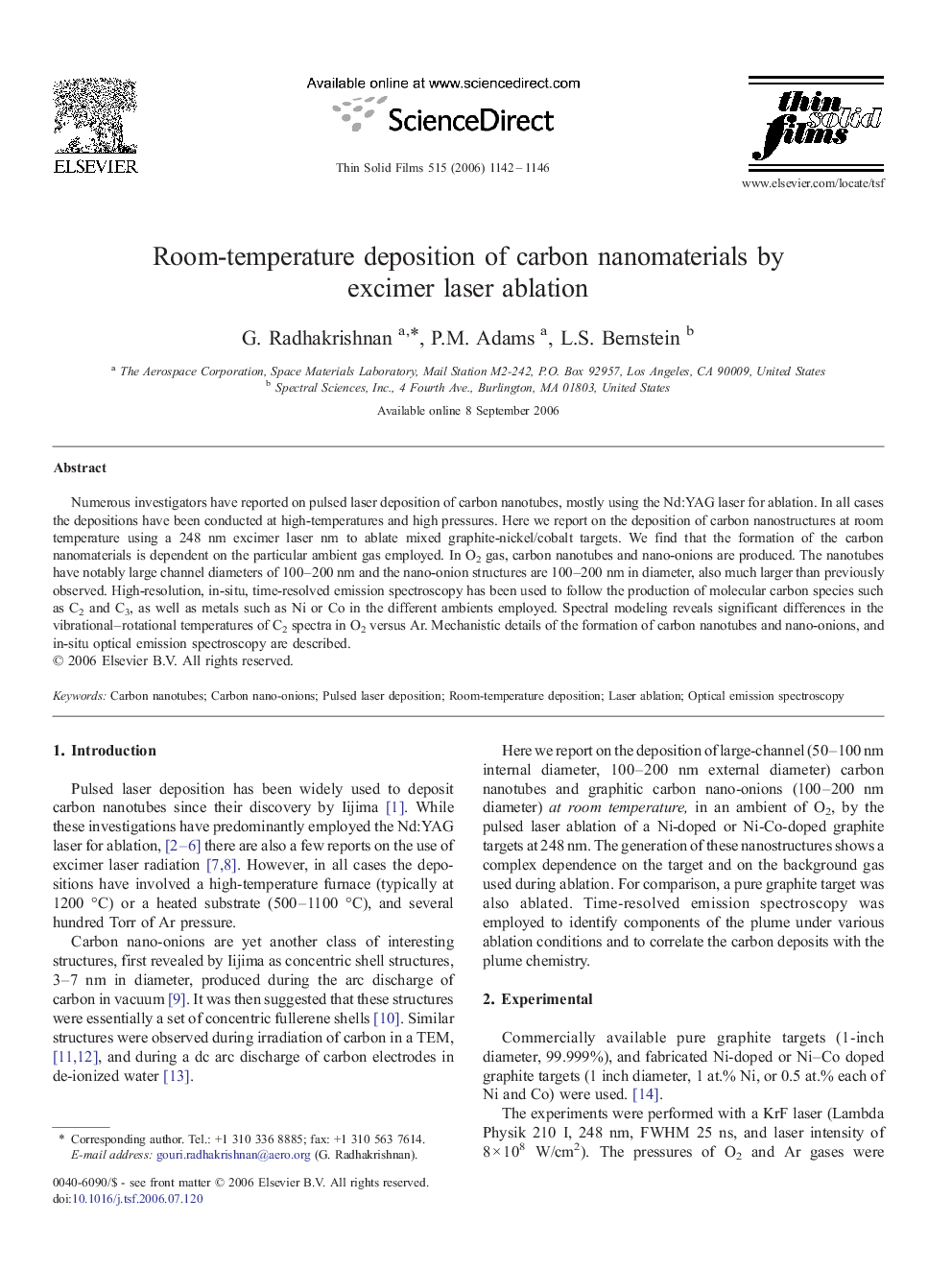| Article ID | Journal | Published Year | Pages | File Type |
|---|---|---|---|---|
| 1675472 | Thin Solid Films | 2006 | 5 Pages |
Numerous investigators have reported on pulsed laser deposition of carbon nanotubes, mostly using the Nd:YAG laser for ablation. In all cases the depositions have been conducted at high-temperatures and high pressures. Here we report on the deposition of carbon nanostructures at room temperature using a 248 nm excimer laser nm to ablate mixed graphite-nickel/cobalt targets. We find that the formation of the carbon nanomaterials is dependent on the particular ambient gas employed. In O2 gas, carbon nanotubes and nano-onions are produced. The nanotubes have notably large channel diameters of 100–200 nm and the nano-onion structures are 100–200 nm in diameter, also much larger than previously observed. High-resolution, in-situ, time-resolved emission spectroscopy has been used to follow the production of molecular carbon species such as C2 and C3, as well as metals such as Ni or Co in the different ambients employed. Spectral modeling reveals significant differences in the vibrational–rotational temperatures of C2 spectra in O2 versus Ar. Mechanistic details of the formation of carbon nanotubes and nano-onions, and in-situ optical emission spectroscopy are described.
